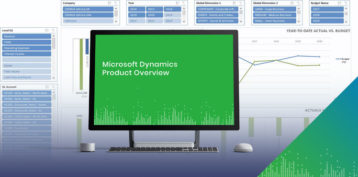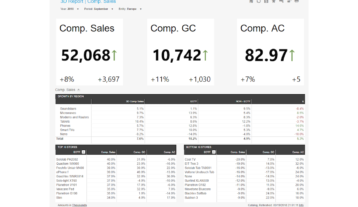11 Important KPIs for a Highly Effective HR Manager

What is a key performance indicator? As the competition for talent grows, workplaces around the world are facing pressure to attract, engage, and retain employees. Under scrutiny to demonstrate the value they add to a company’s strategy, many human resources (HR) departments are turning to analytics supported by strategic key performance indicators (KPIs) and metrics.
Assessing HR Goals
HR managers are responsible for balancing the needs and goals of both the company and the workforce. From talent acquisition to performance management, there are a number of goals that an HR manager needs to prioritize every year that align with the organization’s overall business objectives.
Here are some specific S.M.A.R.T goals a typical HR manager would be working toward:
- Hire 20 new employees this year to grow the company’s headcount by 5%
- Create an engaged work environment and reduce turnover by advancing professional development and implementing a referral program
- Improve employee performance and productivity by 10%
Once you have clearly identified your goals, it’s time to start thinking about the measurable values that you will use to track and determine your progress toward achieving them.
11 KPIs and Metrics Examples for HR Managers and Departments
In today’s data-driven world, the role of HR is changing from an administrative and operational function to a more strategic and advisory one. HR managers are using supportive data and quantifiable measurements—like KPIs and metrics—to back up their employee hiring and retention related decisions.
Not sure what the difference
between a KPI and a metric is?
To measure the effectiveness of your HR department, not all KPIs are relevant. You can come up with KPIs for everything from compensation and culture to employment and performance, but you don’t want to measure them all. Not only is it extremely time-consuming, it’s also an inefficient use of your time. Once you have selected the KPIs that align with what your department plans to achieve this quarter or year, you can place them in a KPI dashboard for a quick snapshot of how you are performing.
Using the examples developed in the previous section, here are a few corresponding KPIs that an HR manager could use in an operational dashboard to monitor progress.
1. Hire 20 new employees this year to grow the company’s headcount by 5%
- Cost per Hire: Shows the amount of resources invested into acquiring talent
- Recruiting Conversion Rate: Helps identify the best recruitment method
- Open Job Requisitions: Shows how many jobs are currently open
- Job Offer Acceptance Rate: Shows how many job offers have been accepted (working toward your 20 job goal)
2. Create an engaged work environment and reduce turnover by advancing professional development and implementing a referral program
- Absenteeism Rate: Shows the amount of labor and productivity lost due to sickness or leave
- Turnover Rate: Indicates the success of retention efforts
- Employee Satisfaction Score: Using a company-wide survey, this is a key metric for understanding talent retention
- Net Promoter Score: Measures how likely an employee is to recommend the company to their network
3. Improve employee performance and productivity by 10%
- Performance Rating: Rating is achieved through internal performance reviews
- Employee Productivity Rate: Helps to measure workforce efficiency over time and plan a more strategic workforce.
- Average Time to Achieve Goals: Quantifies how effective your employees are at meeting the goals they set each year
One of the biggest challenges with developing goals and KPIs is making them relatable and realistic. That’s why it’s important to include your employees and managers in these bigger discussions. When employees are engaged and understand how their work relates to the company’s overarching goals, they will be more committed to using and optimizing analytics.
Start Building Your HR KPI Dashboard
Now that you have established your HR goals for the year and the KPIs and metrics you plan to use to track your progress, you can start creating your KPI dashboards. To make your dashboards effective and useful for your role and department, we have a few tips to share on building your dashboards. We’ve included 10 best practices and some advice on business intelligence solutions designed for your Financial Software system that will help you get started quickly.






